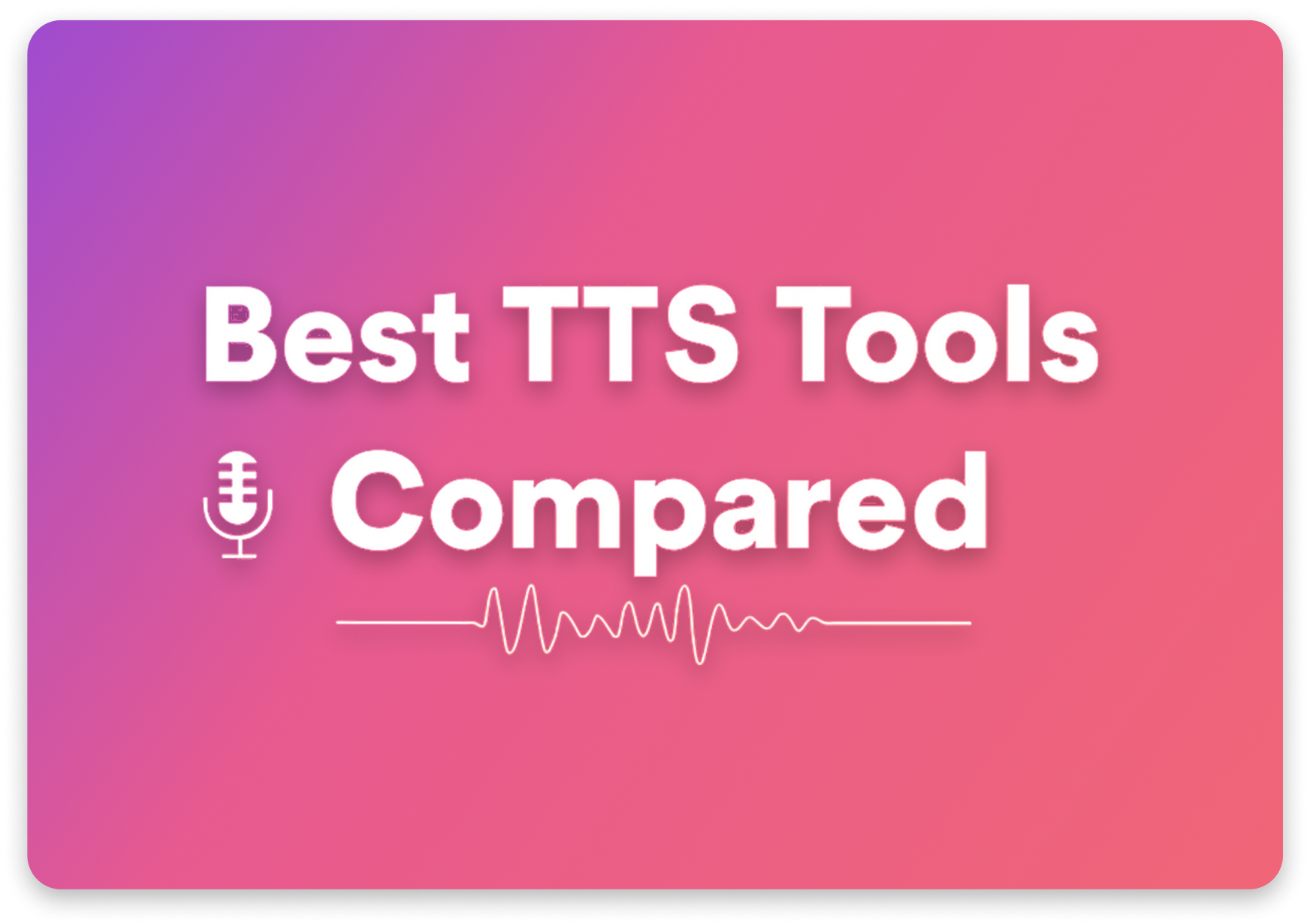ElevenLabs vs Murf AI — compare voice naturalness, studio workflows, APIs, pricing, security, and best use cases for creators, e‑learning teams, podcasters, and developers in 2025.

ElevenLabs and Murf AI represent two distinct approaches to modern text‑to‑speech in 2025. ElevenLabs focuses on ultra‑natural, emotive speech synthesis, multilingual TTS, voice cloning and AI dubbing, plus a developer‑friendly REST API and SDKs for embedding high‑fidelity voices into apps, games, and pipelines. Murf AI delivers a full voice‑over studio experience with a timeline editor, scene management, media layering (music/SFX), and team collaboration features that streamline e‑learning, marketing, and video production. Both platforms support SSML‑style controls, pronunciation dictionaries, and common audio exports (MP3/WAV), but they target different workflows: ElevenLabs prioritizes voice realism, fine‑grain voice parameters, and scalable API use; Murf AI prioritizes end‑to‑end production, approvals, and project consistency for non‑technical teams. This comparison is relevant in 2025 because voice quality, multilingual dubbing, rights management, and data/privacy controls have become core procurement criteria for creators, enterprises, and product teams. Read on to see side‑by‑side capabilities, pricing patterns, security considerations, and which tool best matches common use cases like YouTube narration, audiobooks, e‑learning courses, and embedded product voices.
ElevenLabs delivers ultra-realistic neural text-to-speech, voice cloning, and AI dubbing, aimed at creators, publishers, and developers. It offers REST APIs, SDKs, a web studio, tiered pricing for hobbyists to enterprises, and emphasizes emotive delivery, multilingual support, and rapid model iteration for scalable production pipelines globally.
ElevenLabs has a clean web studio and quick onboarding; developers benefit from concise API docs and SDKs. Non-technical users can generate high-quality audio rapidly, though advanced cloning and parameter tuning require experimentation to master for consistent, production-ready results across scripts.
Murf AI provides a web-based voice-over studio with timeline editing, scene management, music/SFX layering, and collaboration tools. Tailored to e-learning, marketing, and teams, it supports commercial licensing, exports MP3/WAV/MP4, offers tiered team and enterprise plans, and prioritizes workflow-oriented features for non-technical users producing polished narration and video voice-overs at scale.
Murf AI features an intuitive timeline editor with drag-and-drop scenes, clear pronunciation tools, and collaboration workflows. Non-technical teams onboard quickly, managing versions and comments. Developers may find fewer low-level controls, but producers appreciate the studio-like interface for polished voice-over projects.
| Feature | ElevenLabs | Murf AI |
|---|---|---|
1. Ease of Use & Interface | The web studio is minimalist and focused on rapid voice iteration, with a Project workflow for organizing clips and fast previewing. Generation is quick and the interface surfaces voice parameters for fine-tuning, while the API and SDKs enable programmatic workflows that scale beyond the web editor. | The interface uses a timeline and scene-based editor that mirrors video tools, making media import, layering, and scene sequencing straightforward. The studio emphasizes no-code workflows, in-app collaboration, and export presets so teams can assemble multi-section voice-overs and exports without developer involvement. |
2. Features & Functionality | • The platform delivers ultra-natural neural voices with nuanced prosody and emotional range for long-form narration.
• Voice cloning and custom voice creation are available with consent workflows and short reference-sample requirements.
• Multilingual TTS and AI dubbing enable translation-ready outputs across many languages and accents.
• A public Voice Library and voice design tools let teams discover and iterate distinct voice styles.
• REST API and official SDKs allow real-time and batch generation for apps, games, and pipelines.
• Fine-grain controls expose parameters for stability, similarity, and style, plus SSML-like pacing and emphasis options. | • The studio provides a timeline editor with scene management for assembling multi-section scripts and media.
• Built-in background music and SFX support lets teams layer audio and mix levels inside projects.
• Collaboration features include comments, version history, and role-based access for review workflows.
• Script import and scene-based scripting speed up conversion of course modules and video voice-overs.
• Pronunciation controls and custom dictionaries maintain consistency across long scripts and technical terms.
• Exports support common formats for audio and video to deliver MP3, WAV, and MP4 outputs ready for publishing. |
3. Supported Platforms / Integrations | • The service is accessible via a web application and produces standard MP3 and WAV audio exports for downstream workflows.
• A robust REST API and official SDKs (including Python and JavaScript) enable embedding TTS into applications and automation pipelines.
• Community plugins and integrations exist for common content tools to streamline batch processing and deployment.
• Batch processing and programmatic endpoints support large-scale generation and integration with CI/CD or content platforms. | • The product is delivered as a web-based studio with direct exports to MP3, WAV, and MP4 for video projects.
• Script and slide import workflows integrate with presentation and course materials to accelerate project setup.
• Collaboration and team management integrate with content review processes to centralize approvals and versioning.
• An API or advanced integrations are available on higher plans to connect studio workflows with publishing pipelines. |
4. Customization Options | • Detailed voice parameters allow adjustment of stability, clarity, and expressive style for each voice instance.
• Voice cloning tools let teams create custom voices from short, consented reference recordings.
• SSML-style controls and fine-grain pacing options enable precise timing and phrasing for narration.
• Speech-to-speech capabilities allow the system to preserve performance characteristics from reference audio.
• A public and private voice library lets teams store, manage, and reuse branded or custom voices across projects. | • Scene-level emphasis, pitch, and speed controls provide per-section adjustments for multi-part scripts.
• Pronunciation dictionary and custom lexicons ensure consistent rendering of names and technical terminology.
• Brand voice presets let teams lock tone and style for project-wide consistency across courses and campaigns.
• Audio layering controls enable independent volume and fade settings for voice, music, and SFX.
• Template scenes and reusable project components accelerate repeatable production workflows for training and marketing. |
5. Pricing & Plans | • A free tier or trial is typically offered to test voice generation with limited characters or minutes.
• Paid plans are commonly structured around character or usage-based quotas that scale for individual and developer needs.
• API usage is billed based on consumption with higher tiers offering priority throughput and additional voice features.
• Pro and enterprise plans add commercial licensing, higher quotas, and advanced voice-cloning allowances under contractual terms.
• Volume and enterprise agreements provide custom pricing, SLAs, and centralized billing for large-scale deployments. | • A free trial or limited free tier is available to evaluate the studio and produce short projects.
• Subscription tiers are structured around monthly plan levels that increase minutes, exports, and team seats.
• Team and Business plans include collaboration features, centralized project management, and higher usage caps.
• Advanced plans add enterprise features such as single sign-on, dedicated onboarding, and account management.
• Enterprise agreements provide custom pricing, enhanced support, and contract terms for large organizations. |
6. Customer Support | • Comprehensive developer documentation and API references are available to accelerate integration and troubleshooting.
• Email support and a help center provide ticketed assistance with escalation paths on paid plans.
• Enterprise customers receive priority support options and contractual SLAs for uptime and response times. | • A knowledge base and in-app help resources support creators as they learn the studio and editor workflows.
• Email and chat support are available for paid plans with onboarding materials for team setups.
• Enterprise customers are provided with dedicated onboarding and account support to streamline production adoption. |
7. User Experience & Performance | • Voice output is consistently natural and emotive, making it well-suited for narration and dubbing applications.
• Generation times are fast for single clips and scale efficiently via the API for batch workloads.
• The platform is highly reliable for continuous integration into apps, though advanced cloning workflows require careful tuning.
• The learning curve is low for basic outputs but increases when optimizing cloning parameters and edge-case pronunciations. | • The studio produces clear and intelligible voice-overs that integrate smoothly with background music and SFX.
• Rendering times can increase for complex multi-scene projects but remain predictable for scheduled production runs.
• Collaboration and versioning reduce iteration cycles by centralizing feedback and approvals within the project workspace.
• Voices provide consistent, production-ready delivery, although they are less characterful than top-tier expressive samples. |
Pros & Cons Table

• Ultra natural emotive voices
• Multilingual dubbing and speech to speech
• Custom voice cloning
• Developer APIs and SDKs
• Fine-grained voice controls
• Fast generation
• Strong community resources
• Wide adoption

• Limited built-in studio and video features
• Voice cloning requires consent and legal care
• Pricing complexity for heavy API usage
• Requires tuning for results
• Lighter project management tools

• End-to-end studio workflow
• Timeline editor and scene management
• Built-in background music and SFX
• Collaboration with comments and versioning
• Pronunciation dictionary
• Easy for non-technical teams

• Voices sometimes less emotive than top competitors
• Developer APIs and SDKs less prominent
• Limited advanced voice cloning
• Project renders can vary in time
• Pricing rises for team plans
Listen2It bridges the gap between professional voice quality and everyday accessibility, making it a smart choice for creators, businesses, and educators.

Clean UI, with drag-and-drop workflow for voiceovers, podcasts, and audiobooks.

Choose from 600+ AI voices in 80+ languages, with natural-sounding emotional intonation and regional accents.

Flexible pay-as-you-go and affordable subscriptions, with all premium voices included—no surprise fees.

Lightning-fast rendering, even for long scripts or audiobooks. Cloud-based—no software install needed.

Multi-user workspaces and robust API for automation or large-scale projects.

GDPR-compliant, secure cloud storage, dedicated support.

If you want more global language coverage or unique voices

If you need a platform for both high-volume and one-off projects

If you value seamless workflows and team features without a steep price tag











